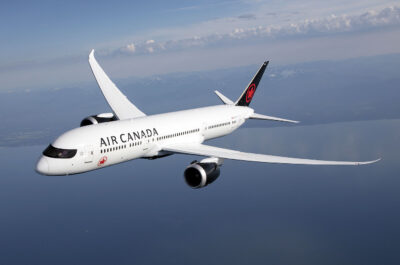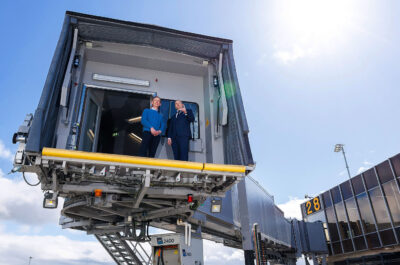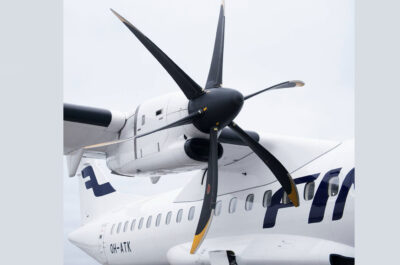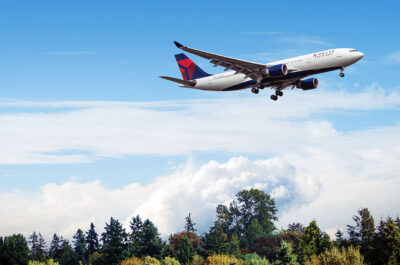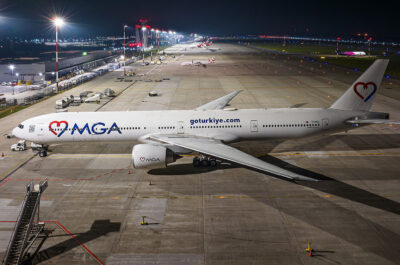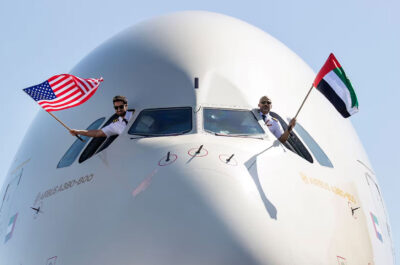The 2013 global Western-built jet accident rate (measured in hull losses per million flights of Western-built jets) was 0.41, the equivalent of one accident for every 2.4 million flights. This was a step back from 2012 when the global Western-built jet accident rate stood at 0.21 -the lowest in aviation history.
MONTREAL – The International Air Transport Association (IATA) released 2013 commercial aviation safety performance.
- There were 210 fatalities from commercial aviation accidents in 2013, reduced from 414 in 2012.
- The 2013 global Western-built jet accident rate (measured in hull losses per million flights of Western-built jets) was 0.41, the equivalent of one accident for every 2.4 million flights. This was a step back from 2012 when the global Western-built jet accident rate stood at 0.21 -the lowest in aviation history. Looked at over the five-year period (2009-2013), 2013 shows a 14.6% improvement on the five-year average of 0.48.
- The 2013 Western-built jet hull loss rate for members of IATA was 0.30, which outperformed the global average by 26.8% and which showed an improvement over the five-year average of 0.32.
“Safety is our highest priority. The aviation industry is united in its commitment to ensure continuous safety improvement. Importantly, that commitment has made flying ever safer. Accidents, however rare, do happen. We release this data as the world continues to focus on the search effort for MH370. The airline industry, its stakeholders and regulators are in the beginning of the journey to unravel this mystery, understand the cause and find ways to ensure that it never happens again,” said Tony Tyler, IATA Director General and CEO.
IATA will release its 50th annual Safety Report on 3 April including complete data and analysis of the 2013 safety performance. Over the five years 2009-2013, the industry has shown improvement in both accident rates and fatalities, although year-to-year comparisons may fluctuate.
2013 Safety by the numbers:
- More than 3 billion people flew safely on 36.4 million flights (29.5 million by jet, 6.9 million by turboprop)
- 81 accidents (all aircraft types, Eastern and Western built), up from 75 in 2012, but below the five-year average of 86 per year
- 16 fatal accidents (all aircraft types) versus 15 in 2012 and the five-year average of 19
- 20% of all accidents were fatal, unchanged from 2012 and below the five-year average of 22%
- 12 hull loss accidents involving Western-built jets compared to six in 2012 and the five-year average of 13
- Six fatal hull loss accidents involving Western-built jets, raised from three in 2012, unchanged from the five-year average
- 210 fatalities compared to 414 in 2012 and the five-year average of 517
IOSA
Airlines on the IATA Operational Safety Audit Registry (IOSA) experienced six Western-built jet hull loss accidents. The total accident rate (all aircraft types) for IOSA-registered carriers was more than two times better than the rate for non-IOSA carriers (1.46 vs. 3.60). Today, 391 (3) airlines are on the IOSA registry. For IATA’s 240 airlines, IOSA is a requirement for membership in the association. That some 151 non-member airlines are also on the registry is a clear indication that IOSA is the global benchmark for airline operational safety management.
“The overall performance of IOSA airlines shows that the audits are among the factors having a positive impact on safety. To increase the effectiveness of the IOSA process, we are upgrading to Enhanced IOSA which incorporates systems to monitor compliance across the two-year audit cycle. This is moving IOSA from a once-every-two-year snapshot to a continuous management process,” said Tyler.
Regional performance-Western-built jet hull loss rates
- The following regions outperformed the global Western-built jet hull loss rate of 0.41: Europe (0.15), North America (0.32), and North Asia (0.00).
- The following regions saw their safety performance improve in 2013 compared to 2012: Africa (from 4.55 to 2.03); Latin America and the Caribbean (from 0.45 to 0.44). North Asia (0.00) and Europe (0.15) were unchanged.
- The following regions saw safety performance decline in 2013 compared to 2012: Asia-Pacific (from 0.50 to 0.70), Commonwealth of Independent States (CIS) (from 0.00 to 2.09); Middle East-North Africa (from 0.00 to 0.68); North America (from 0.00 to 0.32).
- The following regions saw safety performance improve in 2013 relative to the region’s five-year average: Africa (2.03 versus 6.44); Europe (0.15 versus 0.25); Latin America and the Caribbean (0.44 versus 0.86); Middle East-North Africa (0.68 versus 1.51) and North Asia (0.00 versus 0.07).
- Latin America and the Caribbean posted a third consecutive year of improvement but the region’s rate was slightly higher than the world average.
- CIS had the worst performance (2.09) after having had no Western-built jet hull losses in 2012.
Safety in Sub-Saharan Africa
Africa has seen significant progress in safety. African airlines experienced only one Western-built jet hull loss last year. The Western-built jet hull loss rate improved 55.4% between 2013 and 2012, while the region’s accident rate for all aircraft types improved nearly 50% (7.45 accidents per million flights from 14.80 in 2012).
“We are seeing progress in Africa. Airlines on the IOSA registry are performing almost seven times better than non-IOSA operators in the region. But we must remember two things. First, Africa’s overall rate is still many times worse than global levels, so there is plenty of work to do. Second, we cannot take the recent improvement trend for granted. To make these gains a sustainable foundation on which to achieve world-class safety levels is going to require the continued determination and commitment of all stakeholders, including governments,” said Tyler.
Aviation stakeholders, including IATA, the International Civil Aviation Organization (ICAO) and others have united behind the Africa Strategic Improvement Action Plan aimed at achieving world-class safety levels by 2015 by addressing safety deficiencies and strengthening regulatory oversight capabilities.
A key focus for governments in the effort to achieve more effective safety oversight will be the implementation of ICAO’s safety-related standards and recommended practices (SARPS), according to the Universal Safety Oversight Audit Program (USOAP). As of the end of 2013, only 11 African states had achieved 60% implementation of the SARPS. Meeting the Abuja Declaration’s 2015 commitment will require a major acceleration in the pace of implementation.
Safety in the CIS
IATA member airlines in the CIS experienced zero accidents in 2013, outpacing all regions. However, the region as a whole experienced a significant deterioration compared to 2012. The proposed safety enhancement strategy in CIS is based on boosting individual states’ oversight capabilities and ensuring compliance with ICAO standards and recommended practices; introduction of Safety Management Systems; launch of the IATA Training and Quality Initiative (ITQI)-based model; and infrastructure development including assistance in the implementation of Performance-based Navigation (PBN). IATA encourages regulators in individual states to benefit from existing internationally-recognized audit programs, like IOSA, by utilizing them to enhance safety oversight systems already in place.
Accident analysis
Runway Safety Runway excursions, in which an aircraft departs a runway during landing or takeoff, are the most common type of accident, accounting for 23% of all accidents over the past five years (2009-2013). Survivability of such accidents is high, representing less than 8% of fatalities over the previous five years. Improving runway safety is a key focus of the industry’s strategy to reduce operational risk. Information sharing, risk analysis, training and analysis of the taxonomy of runway safety are all part of the industry’s comprehensive approach to improvement in this area. The second edition of the Runway Excursion Risk Reduction Toolkit (produced in 2011 with ICAO) and ICAO’s new Runway Safety Implementation Kit (iKit), developed in collaboration with IATA and several other aviation organizations are examples of how industry stakeholders are aligning resources to drive improvements in this area.
Loss of control in-flight (LOC-I) While few in number, LOC-I accidents almost always are catastrophic; 95% of the LOC-I accidents over the past five years involved fatalities to passengers or crew. There were eight LOC-I accidents in 2013, all of which involved fatalities, and over the period from 2009 through 2013, 10% of all accidents were categorized as LOC-I. These resulted in 1,546 of the 2,585 fatalities over this period. IATA is working to compile LOC-I prevention training materials in a single online resource, with an accompanying LOC-I prevention toolkit.
Controlled-flight-into-terrain (CFIT) accidents are also a concern. There were six in 2013. Most CFIT accidents occur in the approach and landing phase of flight and are often associated with non-precision approaches. From 2009 through 2013, 52% of CFIT accidents were known to involve the lack of a precision approach. There is a very strong correlation between the lack of Instrument Landing Systems or state-of-the-art approach procedures, such as performance base navigation (PBN) and CFIT accidents.
IATA has embarked on a strategy to reduce CFIT accidents by establishing a campaign for states to expedite the implementation of PBN approach procedures for runways lacking precision approaches.
Using Data Analysis to Drive Improvements
The introduction of a data-driven approach is essential for all aviation safety initiatives, since it enables structured safety management based on real world facts. IATA has created the Global Aviation Data Management (GADM) program as a comprehensive safety data warehouse. The GADM includes analysis reports covering accidents, incidents, ground damage, maintenance and audits, plus data from more than 1.8 million flights in the last 15 months. Up to 390 airlines are contributing to at least one GADM database.
Analysis of this information will be used to identify industry safety issues and to drive and prioritize initiatives and actions to solve the identified issues.
“Safety is a team effort in which IATA, ICAO and other stakeholders are fully aligned. Using data will help us identify potential areas of concern, long before they rise to the level of a threat to safety,” said Tyler.
Theodore is the Co-Founder and Managing Editor of TravelDailyNews Media Network; his responsibilities include business development and planning for TravelDailyNews long-term opportunities.























